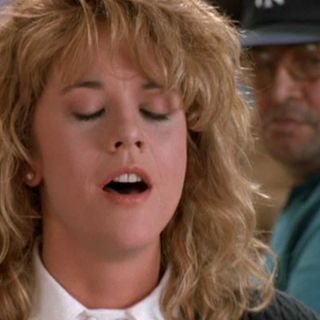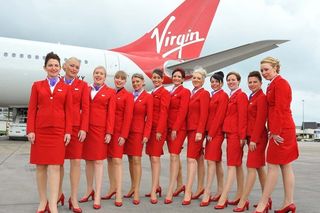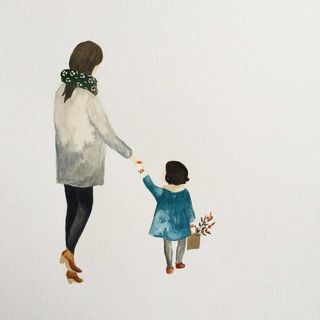
Virgin Atlantic Flight Attendants No Longer Have to Wear Make‑up, Skirts
We’d be more excited if the rules weren’t so ridiculous to begin with.

Virgin Atlantic will no longer require its female cabin crew members to wear make-up, reports the BBC. Moreover, it will now offer its female flight attendants the option of pants or skirt with their uniform; previously, pants were available for women only upon request. The UK-based airline is calling the update a “significant change.”
We’d suggest adding: long overdue.
The airline industry has a long history of policing its female cabin crews’ appearances. Female flight attendants across the world have their hair, faces, weight, clothing and shoes dictated and monitored by their employers, who tout them as the face of the airline brand.
For example, in 2010, IndiGo mandated their female flight attendants wear a wig of short hair, to look “young and international,” Mumbai Mirror reported the airline’s stylist, Ambika Pillai, saying. In an attempt to redo its image, the airline decreed that long hair or buns would not fit this new look, Pillai told the paper. In 2014, Air India policed flight attendants’ body weight, declaring any employee exceeding a predetermined body mass index as unfit for the position. The move was criticized by Air India’s cabin crew union, who called the guidelines “arbitrary and discriminatory,” NDTV reported at the time.
When airlines aren’t mandating women’s appearance, they ‘ask’ — and the asks have gotten absurd. “Malaysia Airlines asks that female attendants wear make-up to match their coloring, with a minimum of three shades of color on their eyes,” according to Daily Mail in 2015, and “before they can board the flight the crew is checked off by a grooming official,” reported Business Insider two years prior.
The airline industry seems to have completely escaped the influence of slowly burgeoning body positivity movements, and 21st-century clothing norms, existing miles away from the reality on the ground. Delta Airlines, in a (futile) attempt to get with the program, said that, it is “consulting a podiatrist to help determine which footwear is both fashionable and comfortable for the demanding job,” stressing the important of balance, Quartz reported in 2016. The article, however, adds that Delta still requires its female flight attendants to wear heels to and from the plane — a minimum height of half an inch — which appears to be a common practice at most airlines.
Airlines also police male flight attendants’ appearance, but male employees face far fewer restrictions, mainly around facial hair and visible tattoos. No one is checking their faces for three different shades of eye shadow, or insisting that they wear shoes that are known to cause a variety of health problems with chronic use.
Standards for the appearance of flight attendants, which are often set to adhere to societal perceptions of femininity, reinforce gender stereotypes of how women and men are supposed to look in the name of professionalism and branding. The burden of socially accepted ‘beauty’ is heavier for women, a phenomenon that appears to be unchallenged and normalized in the airline industry. While the Virgin Atlantic announcement is a step in the right direction, eliminating beauty standards from hiring and workplace policies entirely would be the real “significant change.”
Related


Peripheral Vision: An 18‑Year‑Old Nanny from Aurangabad
